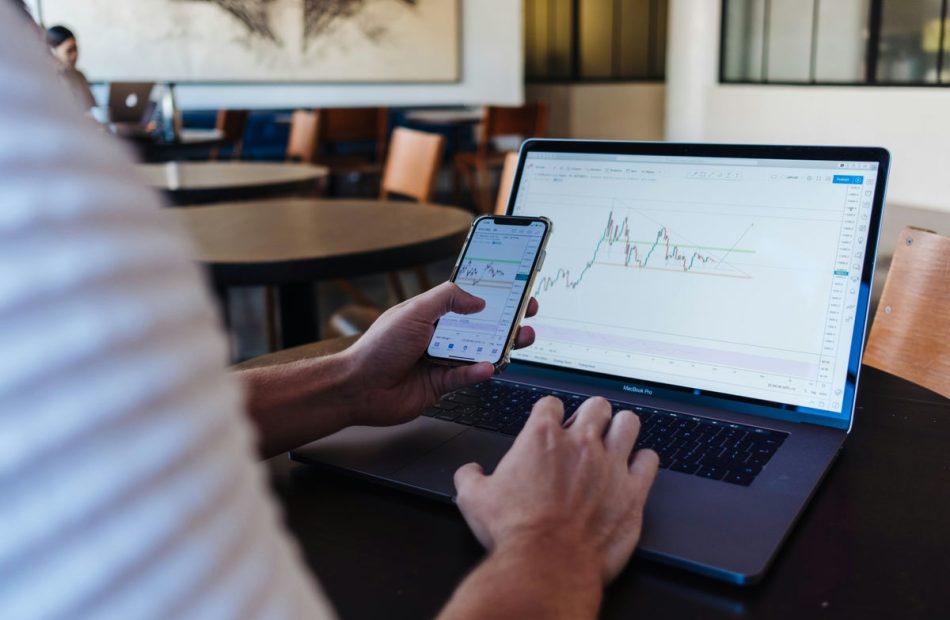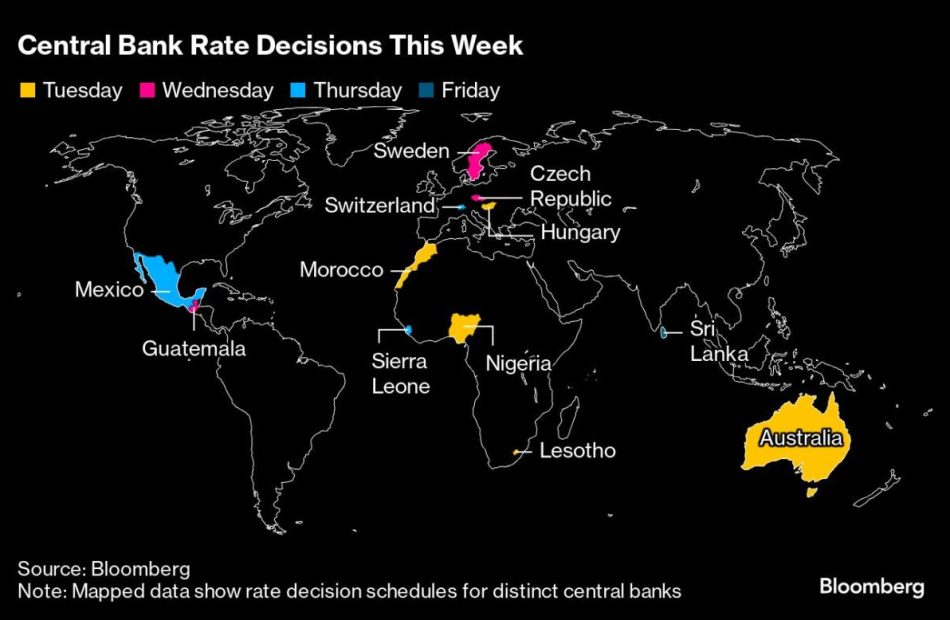Gran Tierra Energy Recent Insider Activity
Disclosed in the latest SEC filing, a significant insider purchase on September 19, involves Gary Guidry, President and CEO at Gran Tierra Energy GTE.
What Happened: Guidry’s recent purchase of 100,000 shares of Gran Tierra Energy, disclosed in a Form 4 filing with the U.S. Securities and Exchange Commission on Thursday, reflects confidence in the company’s potential. The total transaction value is $617,000.
The latest market snapshot at Friday morning reveals Gran Tierra Energy shares up by 5.77%, trading at $6.42.
About Gran Tierra Energy
Gran Tierra Energy Inc is an independent energy company. It is engaged in the acquisition, exploration, development, and production of oil and gas properties. The firm produces light crude oil, supplemented with medium crude and natural gas. Gran Tierra holds interests in producing and prospective properties in Colombia and prospective properties in Ecuador. The company derives its revenue from Colombia.
Gran Tierra Energy: A Financial Overview
Positive Revenue Trend: Examining Gran Tierra Energy’s financials over 3 months reveals a positive narrative. The company achieved a noteworthy revenue growth rate of 4.88% as of 30 June, 2024, showcasing a substantial increase in top-line earnings. As compared to competitors, the company encountered difficulties, with a growth rate lower than the average among peers in the Energy sector.
Navigating Financial Profits:
-
Gross Margin: The company sets a benchmark with a high gross margin of 66.49%, reflecting superior cost management and profitability compared to its peers.
-
Earnings per Share (EPS): Gran Tierra Energy’s EPS is below the industry average. The company faced challenges with a current EPS of 1.16. This suggests a potential decline in earnings.
Debt Management: Gran Tierra Energy’s debt-to-equity ratio is notably higher than the industry average. With a ratio of 1.44, the company relies more heavily on borrowed funds, indicating a higher level of financial risk.
Exploring Valuation Metrics Landscape:
-
Price to Earnings (P/E) Ratio: The Price to Earnings ratio of 3.87 is lower than the industry average, indicating potential undervaluation for the stock.
-
Price to Sales (P/S) Ratio: The Price to Sales ratio is 0.3, which is lower than the industry average. This suggests a possible undervaluation based on sales performance.
-
EV/EBITDA Analysis (Enterprise Value to its Earnings Before Interest, Taxes, Depreciation & Amortization): With a below-average EV/EBITDA ratio of 1.78, Gran Tierra Energy presents an opportunity for value investors. This lower valuation may attract investors seeking undervalued opportunities.
Market Capitalization Analysis: Reflecting a smaller scale, the company’s market capitalization is positioned below industry averages. This could be attributed to factors such as growth expectations or operational capacity.
Now trade stocks online commission free with Charles Schwab, a trusted and complete investment firm.
The Importance of Insider Transactions
Insider transactions shouldn’t be used primarily to make an investing decision, however an insider transaction can be an important factor in the investing decision.
Considering the legal perspective, an “insider” is defined as any officer, director, or beneficial owner holding more than ten percent of a company’s equity securities, according to Section 12 of the Securities Exchange Act of 1934. This includes executives in the c-suite and major hedge funds. These insiders are mandated to disclose their transactions through a Form 4 filing, to be submitted within two business days of the transaction.
Pointing towards optimism, a company insider’s new purchase signals their positive anticipation for the stock to rise.
Nevertheless, insider sells may not necessarily indicate a bearish view and can be influenced by various factors.
Exploring Key Transaction Codes
Delving into transactions, investors typically prioritize those unfolding in the open market, as precisely outlined in Table I of the Form 4 filing. A P in Box 3 indicates a purchase, while S signifies a sale. Transaction code C signals the conversion of an option, and transaction code A denotes a grant, award, or other acquisition of securities from the company.
Check Out The Full List Of Gran Tierra Energy’s Insider Trades.
Insider Buying Alert: Profit from C-Suite Moves
Benzinga Edge reveals every insider trade in real-time. Don’t miss the next big stock move driven by insider confidence. Unlock this ultimate sentiment indicator now. Click here for access.
This article was generated by Benzinga’s automated content engine and reviewed by an editor.
Market News and Data brought to you by Benzinga APIs
© 2024 Benzinga.com. Benzinga does not provide investment advice. All rights reserved.
Move Over, Nvidia: Billionaires Are Selling Its Shares and Buying Up These 2 Artificial Intelligence (AI) Stocks Instead
Wall Street has fallen in love with the artificial intelligence (AI) trend. This is not surprising, considering that PwC analysts expect AI to add nearly $15.7 trillion to the global economy annually by the end of 2030.
Semiconductor giant Nvidia‘s (NASDAQ: NVDA) shares have gained nearly 430% in the past three years. While the AI trend is still going strong, many analysts now view Nvidia’s shares as being priced for perfection. Challenges such as increasing competition, reduced pricing power, geopolitical and regulatory risks, and over-reliance on a few customers may negatively impact the company’s share price in the coming months.
Billionaire investors such as George Soros of Soros Fund Management, Stanley Druckenmiller of Duquesne Family Office, Lee Ainslie of Maverick Capital, and David Tepper of Appaloosa Management sold shares of Nvidia in the second quarter, according to their 13F filings with the Securities and Exchange Commission. At the same time, many billionaire investors have been putting money into more reasonably priced AI stocks such as Super Micro Computer (NASDAQ: SMCI) and Microsoft (NASDAQ: MSFT).
Those two billionaire picks could be smart buys for retail investors, too.
Super Micro Computer
Super Micro Computer, also known as Supermicro, is a leading provider of server and storage solutions for data centers. Its shares are up by nearly 1,110% over the past three years, even after the stock fell by almost 64% from its 52-week high in March — a slide mainly triggered by weak investor sentiment toward growth stocks. The company has delayed filing its 10K for its fiscal 2024, which did not go over well with investors, and an unfavorable report from short-seller Hindenburg Research also took a toll on the stock.
Despite this, increasing demand for AI-optimized infrastructure from data centers, enterprise customers, consumer internet companies, and governments remains a major growth catalyst. Bank of America expects the AI server market to grow at a 50% compound average rate over the next three years, and expects Supermicro’s share of the AI server market to grow from 10% in 2023 to 17% in 2026.
Supermicro’s servers stand out from other mass-produced servers because they are easily customizable to their owners’ changing requirements, energy efficient, and effective in thermal management. Goldman Sachs has projected that data center power demand will rise by nearly 160% from 2022 to 2030. With data centers estimated to account for a whopping 3% to 4% of global power consumption by 2030, demand for Supermicro’s AI-optimized servers integrated with liquid cooling technology should continue to rise.
Supermicro also benefits from its close ties with major chip manufacturers like Nvidia, Advanced Micro Devices, and Intel. These relationships give it early access to advanced chip technologies, which it then embeds in its server solutions. Supermicro thus offers its clients early access to the newest advanced technologies.
Analysts now expect Supermicro’s revenues to grow by 88.3% year over year to $28.14 billion and adjusted earnings per share (EPS) to rise by 52.3% year over year to $33.65 in its fiscal 2025 (which will end in June 2025). Although analysts’ estimates for fiscal 2026 have been muted, that’s not surprising considering the high base they will be growing from. In fiscal 2026, Supermicro’s revenues and adjusted EPS are expected to grow by 10.8% and 30.2%, respectively.
Supermicro is trading at about 23 times earnings, far lower than its historical three-year average of 30.4 times. Considering the company’s focus on energy-efficient computing, its close relationships with chip manufacturers, and its reasonable valuation, Super Micro is a smart pick now.
Microsoft
Technology behemoth Microsoft was also a favorite buy among billionaire investors in the second quarter. While the stock did not soar even after the company reported a double beat in its fiscal 2024 fourth quarter (which ended June 30), it is still up by around 14.7% so far in 2024.
Investors were concerned about the slower-than-expected growth of the Azure cloud computing business last quarter, which was mainly attributed to the constrained capacity of AI services. However, this will most likely prove to be a short-term headwind. With demand for Azure AI services going strong, Microsoft expects increased capital expenditures in AI capacity will reaccelerate Azure’s growth by the second half of fiscal 2025.
Azure AI enables enterprises to build custom AI applications by giving them access to prebuilt models, advanced security features, collaboration tools, and other supporting infrastructure. These services are rapidly gaining popularity, as is evident from the 60,000-strong customer base of Azure AI at the end of the fiscal fourth quarter, up 60% on a year-over-year basis. Azure also remains a preferred choice for enterprises handling multicloud and hybrid workloads. This is apparent considering that Azure accounted for a 20% share of global cloud infrastructure services in the second quarter of 2024.
Microsoft has also embedded OpenAI’s generative AI capabilities to build its AI-powered Copilot agent, which it has integrated across many of its products and services. Since it became generally available, more than 77,000 organizations have adopted Copilot. Copilot for its Microsoft 365 productivity suite saw a 60% quarter-over-quarter increase in customer count in fiscal Q4. Furthermore, the increasing adoption of Copilot has played a pivotal role in doubling the number of large enterprise customers with more than 10,000 seats for Microsoft 365 on a quarter-over-quarter basis.
Besides cloud computing, business productivity, and AI, Microsoft also has a solid presence in cybersecurity, gaming, and professional networking. The company posted impressive financial results in fiscal 2024, with revenues and earnings jumping 16% and 20%, respectively. That’s why it makes sense for retail investors to piggyback on billionaire investors’ enthusiasm and purchase at least a small stake in this diversified technology giant.
Should you invest $1,000 in Super Micro Computer right now?
Before you buy stock in Super Micro Computer, consider this:
The Motley Fool Stock Advisor analyst team just identified what they believe are the 10 best stocks for investors to buy now… and Super Micro Computer wasn’t one of them. The 10 stocks that made the cut could produce monster returns in the coming years.
Consider when Nvidia made this list on April 15, 2005… if you invested $1,000 at the time of our recommendation, you’d have $722,320!*
Stock Advisor provides investors with an easy-to-follow blueprint for success, including guidance on building a portfolio, regular updates from analysts, and two new stock picks each month. The Stock Advisor service has more than quadrupled the return of S&P 500 since 2002*.
*Stock Advisor returns as of September 16, 2024
Bank of America is an advertising partner of The Ascent, a Motley Fool company. Manali Pradhan has no position in any of the stocks mentioned. The Motley Fool has positions in and recommends Advanced Micro Devices, Bank of America, Goldman Sachs Group, Microsoft, and Nvidia. The Motley Fool recommends Intel and recommends the following options: long January 2026 $395 calls on Microsoft, short January 2026 $405 calls on Microsoft, and short November 2024 $24 calls on Intel. The Motley Fool has a disclosure policy.
Move Over, Nvidia: Billionaires Are Selling Its Shares and Buying Up These 2 Artificial Intelligence (AI) Stocks Instead was originally published by The Motley Fool
Nvidia's CEO Just Explained Why This Is the Artificial Intelligence (AI) Chip Stock to Own
No company has been a bigger winner than Nvidia (NASDAQ: NVDA) as nearly every tech company has collectively poured billions of dollars into developing their generative AI (artificial intelligence) capabilities. The company has added $2.5 trillion to its market cap over the last two years as sales and profits exploded with the demand for its GPUs.
The chipmaker has shown incredible pricing power amid the strong demand. That’s evidenced by its gross margin expanding into the upper 70% range. And with the booming sales growth, it’s seen very high operating leverage, which translates into massive bottom-line growth. To be sure, Nvidia’s performance as a business, not just a stock, over the last two years has been nothing short of phenomenal.
But Nvidia isn’t the only AI chip stock in the market. And CEO Jensen Huang just explained why another company may be worth owning, perhaps even more so than his own company.
“The world’s best by an incredible margin”
At an investor conference earlier this month, Huang had high praise for one of Nvidia’s biggest business partners: Taiwan Semiconductor Manufacturing (NYSE: TSM), known as TSMC.
TSMC is the largest semiconductor foundry, or fab, in the world. When a company like Nvidia designs a new chip, it takes it to TSMC to actually print the design on a silicon wafer. That takes incredible precision and innovative technical capabilities. TSMC is the top choice for many chip designers, including Nvidia. TSMC commands over 60% of global spending at chip foundries.
“We’re fabbing out of TSMC because it’s the world’s best,” Huang said. “And it’s the world’s best not by a small margin, it’s the world’s best by an incredible margin.”
That’s why Nvidia and almost anyone else that needs to produce cutting-edge chips picks TSMC over its competitors. Huang did say Nvidia could switch to another foundry if it had to. But he also said competitors’ capabilities can’t match TSMC’s and it would result in less performance or higher cost.
He also praised TSMC’s ability to scale its operations. When Nvidia saw demand for its chips skyrocket, TSMC was able to help it meet that growing demand so it could take advantage of the opportunity. Any business that needs to be able to scale up needs to work with TSMC.
Importantly, TSMC’s position as the market leader, winning the majority of revenue in the industry, ensures it’ll stay in its leading position. It has more money to reinvest in R&D and create the next generation of processes. The virtuous cycle leads to more and more big contracts with big tech companies designing super high-end chips over time.
TSMC still has a lot of growth left
TSMC might be the biggest company in the industry, but there’s still a ton of growth for it to capture.
Tech companies are all planning to ramp up their spending on AI systems in data centers. Total spending on AI chip content and related systems is forecast to reach $193.3 billion in 2027, according to estimates from IDC. That’s up from $117.5 billion this year, translating into an 18% compound annual growth rate over the next three years.
Importantly, TSMC is highly agnostic to that growth. Whether that growth comes from Nvidia, one of its competitors, or custom chips designed by its biggest customers, TSMC is likely winning the bulk of those contracts. In fact, the virtuous cycle and TSMC’s leadership in cutting-edge chips means it could grow that part of its business even faster than the industry. On top of that, TSMC has room to improve its margins.
That’s all reflected in analysts’ forecasts for the company over the next five years. The average analyst expects TSMC to grow earnings over 20% per year for the next half-decade. But you don’t have to pay up for that growth. Shares currently trade at just over 20 times the consensus 2025 earnings forecast.
Few other companies offer that same level of potential growth at that price. So, not only is it the world’s best fab by an incredible margin, investors can buy a stake in it right now at an incredible price.
Should you invest $1,000 in Taiwan Semiconductor Manufacturing right now?
Before you buy stock in Taiwan Semiconductor Manufacturing, consider this:
The Motley Fool Stock Advisor analyst team just identified what they believe are the 10 best stocks for investors to buy now… and Taiwan Semiconductor Manufacturing wasn’t one of them. The 10 stocks that made the cut could produce monster returns in the coming years.
Consider when Nvidia made this list on April 15, 2005… if you invested $1,000 at the time of our recommendation, you’d have $722,320!*
Stock Advisor provides investors with an easy-to-follow blueprint for success, including guidance on building a portfolio, regular updates from analysts, and two new stock picks each month. The Stock Advisor service has more than quadrupled the return of S&P 500 since 2002*.
*Stock Advisor returns as of September 16, 2024
Adam Levy has positions in Taiwan Semiconductor Manufacturing. The Motley Fool has positions in and recommends Nvidia and Taiwan Semiconductor Manufacturing. The Motley Fool has a disclosure policy.
Nvidia’s CEO Just Explained Why This Is the Artificial Intelligence (AI) Chip Stock to Own was originally published by The Motley Fool
Zoom Video Down 1.7% Since Last Earnings Report: Can It Rebound?
It has been about a month since the last earnings report for Zoom Video Communications ZM. Shares have lost about 1.7% in that time frame, underperforming the S&P 500.
Will the recent negative trend continue leading up to its next earnings release, or is Zoom Video due for a breakout? Before we dive into how investors and analysts have reacted as of late, let’s take a quick look at the most recent earnings report in order to get a better handle on the important drivers.
Zoom Q2 Earnings Beat, Enterprise Customers Drive Revenues
Zoom’s second-quarter fiscal 2025 adjusted earnings of $1.39 per share beat the Zacks Consensus Estimate by 14.88% and increased 3.73% year over year.
Revenues of $1.16 billion beat the consensus mark by 1.22% and increased 2.09% year over year on strong growth from Enterprise customers. Adjusting for foreign currency impact, revenues in constant currency were $1.166 billion, up 2.4% year over year.
Quarter Details
Enterprise revenues were $682.8 million, up 3.5% year over year and represented 58.7% of total revenues. Customers contributing more than $100,000 in revenues in the trailing 12 months grew 7% to 3,933. These customers accounted for 31% of revenues, up from 29% in the year-ago quarter.
In the fiscal second quarter, as part of an effort to improve the customer experience and drive greater efficiency in operations, the company transitioned 26,800 Enterprise customers with low annualized revenue run rate to Online.
The number of Enterprise customers at the end of the second quarter, after accounting for the transition, was approximately 191,600.
The company reported a trailing 12-month net dollar expansion rate for Enterprise customers of 98%.
As of the end of the quarter under review, the cumulative number of Zoom Rooms licenses purchased was more than 2 million.
In the quarter, Zoom saw amazing traction with Workvivo as it reached 69 customers with more than $100,000 in ARR, roughly doubling year over year. Workvivo was named Meta Platform’s only preferred migration partner for its customers as it retires Workplace from Meta.
ZM witnessed additional traction in Zoom Contact Center as it surpassed 1,100 Zoom Contact Center customers, representing more than 100% year-over-year growth. This was driven by its recently launched higher pricing tiers as well as its success in larger deals.
The company now has five customers with 100,000 or more Zoom Phone seats. Zoom AI Companion has grown significantly with more than 1.2 million customer accounts enabled as of date.
Non-GAAP Operating Details
Non-GAAP gross margin in the fiscal second quarter was 78.6%, which was slightly lower than 80.3% in the year-ago period, mainly due to investments in AI innovation.
Research and development expenses increased 7.8% year over year to $206.7 million. Sales and marketing expenses declined 3.9% to $358.7 million, while general and administrative expenses plunged 15.3% to $109.5 million.
Operating income rose 13.9% to $202.37 million year over year. The operating margin came in at 17.6% compared with the year-ago quarter’s operating margin of 15.9%.
Balance Sheet
Total cash, cash equivalents and marketable securities, as of Jul 31, 2024, were $7.5 billion. As of Apr 30, 2024, cash, cash equivalents and marketable securities were $7.4 billion.
Net cash provided by operating activities was $449.3 million for the fiscal second quarter, up 33.7% year over year. Free cash flow was $365.1 million, up 26.2% year over year.
Guidance
Zoom expects third-quarter fiscal 2025 revenues between $1,162 million and $1,165 million.
Non-GAAP earnings per share are expected in the range of $1.29-$1.31.
For fiscal 2025, Zoom expects revenues in the range of $4.63-$4.64 billion.
Non-GAAP earnings per share are expected in the band of $5.29-$5.32.
How Have Estimates Been Moving Since Then?
It turns out, fresh estimates have trended upward during the past month.
The consensus estimate has shifted 12.46% due to these changes.
VGM Scores
At this time, Zoom Video has an average Growth Score of C, however its Momentum Score is doing a lot better with an A. However, the stock was allocated a grade of C on the value side, putting it in the middle 20% for this investment strategy.
Overall, the stock has an aggregate VGM Score of B. If you aren’t focused on one strategy, this score is the one you should be interested in.
Outlook
Estimates have been trending upward for the stock, and the magnitude of these revisions looks promising. Notably, Zoom Video has a Zacks Rank #3 (Hold). We expect an in-line return from the stock in the next few months.
Performance of an Industry Player
Zoom Video is part of the Zacks Internet – Software industry. Over the past month, HubSpot HUBS, a stock from the same industry, has gained 6.7%. The company reported its results for the quarter ended June 2024 more than a month ago.
HubSpot reported revenues of $637.23 million in the last reported quarter, representing a year-over-year change of +20.4%. EPS of $1.94 for the same period compares with $1.34 a year ago.
For the current quarter, HubSpot is expected to post earnings of $1.89 per share, indicating a change of +18.9% from the year-ago quarter. The Zacks Consensus Estimate remained unchanged over the last 30 days.
The overall direction and magnitude of estimate revisions translate into a Zacks Rank #3 (Hold) for HubSpot. Also, the stock has a VGM Score of B.
© 2024 Benzinga.com. Benzinga does not provide investment advice. All rights reserved.
Amazon Going Nuclear? Hiring Plans Indicate Company May Be Eyeing Nuclear To Meet Energy Needs
Recent developments suggest that Amazon.com, Inc. AMZN may be ramping up its interest in nuclear energy to fuel its growing needs.
The tech giant has reposted a job opening for a Principal Nuclear Engineer in its Data Center Engineering division, raising questions about its long-term energy strategy.
Nano Nuclear Energy Inc. NNE, an emerging microreactor technology company, cited the opening in a social media post on X, formerly Twitter.
Why This Is Important: The opening by Amazon comes shortly after Talen Energy agreed to sell a 960-megawatt data center campus to Amazon Web Services (AWS) for $650 million earlier this year, which includes a decade-long electricity supply agreement from the Susquehanna nuclear power station.
This particularly highlights Amazon’s commitment to clean, carbon-free energy sources.
An Amazon spokesperson told the American Nuclear Society, “To supplement our wind and solar energy projects, which depend on weather conditions to generate energy, we’re also exploring new innovations and technologies and investing in other sources of clean, carbon-free energy. This agreement with Talen Energy for carbon-free energy is one project in that effort.”
In a report released on July 10, Amazon announced that it has achieved its goal of sourcing 100% of the electricity used across its global operations — including data centers, corporate offices, grocery stores, and fulfillment centers — from renewable energy, a target initially set for 2030. The company plans to continue investing in solar and wind projects while exploring nuclear power and battery storage to sustain its energy needs.
Why The Nuclear-Energy Interest May Be Controversial
Amazon’s nuclear ambitions are not without controversy.
Following the agreement with Talen Energy, utility companies American Electric Power Company, Inc. AEP and Exelon Corporation EXC formally objected to the Federal Energy Regulatory Commission (FERC), claiming that the electricity arrangement allows Amazon to benefit from the power grid without contributing to its maintenance costs, a report by the American Nuclear Society suggests.
They argue this could lead to increased expenses for other PJM ratepayers, as the data center’s power usage is indirectly linked to the grid’s resources. PJM ratepayers are customers of the Pennsylvania-New Jersey-Maryland Interconnection (PJM).
That’s not all!
A March report by Heat Map suggests that a divide has emerged among tech giants regarding energy strategies, with Amazon focusing on securing low-cost power without prioritizing new carbon-free sources, while Alphabet Inc. GOOG GOOGL and Microsoft Corporation MSFT aim for comprehensive carbon-free energy solutions.
Microsoft and Google have shown increased interest in nuclear power to ensure a stable electricity supply, reflecting a broader commitment to sustainable energy practices.
As Amazon moves forward with its nuclear initiatives, the intersection of innovation and regulatory scrutiny will play a crucial role in shaping its energy strategy.
The company’s hiring of nuclear engineers underscores its serious intentions in this space, but the implications of these decisions could significantly affect its relationships within the energy sector.
Will Amazon’s foray into nuclear power pave the way for a more sustainable future, or complicate its standing in an already complex energy landscape?
According to Benzinga Pro, AMZN stock has gained over 48% in the past year. Investors can gain exposure to the stock via ProShares Online Retail ETF ONLN and Fidelity MSCI Consumer Discretionary Index ETF FDIS.
Disclaimer: This content was partially produced with the help of AI tools and was reviewed and published by Benzinga editors.
Read Next:
Market News and Data brought to you by Benzinga APIs
© 2024 Benzinga.com. Benzinga does not provide investment advice. All rights reserved.
Fed Is About to Get Validation for Its Jumbo Rate Cut
(Bloomberg) — The Federal Reserve’s preferred price metric and a snapshot of consumer demand are seen corroborating both the central bank’s aggressive interest-rate cut and Chair Jerome Powell’s view that the economy remains strong.
Most Read from Bloomberg
Economists see the personal consumption expenditures price index rising just 0.1% in August for the second time in three months. The inflation gauge probably climbed 2.3% from a year earlier, the smallest annual gain since early 2021 and a shade higher than the central bank’s 2% goal.
The slowdown in inflation from a year ago reflects falling energy and weaker food prices, along with moderating core costs. The PCE price gauge excluding food and fuel probably rose 0.2% for a third month, economists expect government data to show Friday.
The step-down in inflationary pressures from earlier this year provided Fed policymakers with enough confidence to lower rates on Sept. 18 by a half percentage point. The cut was the first in more than four years, and represented a pivot in the central bank’s policy toward averting a deterioration in the job market.
Investors will parse remarks from a large number of Fed officials in the coming week. Governors Michelle Bowman, Adriana Kugler and Lisa Cook, along with regional presidents Raphael Bostic and Austan Goolsbee, are among those set to appear at various events.
The August inflation figures will be accompanied by data on personal spending and income, and economists project another solid advance in household outlays. Sustained consumer spending growth helps raise the chances that the economy will continue expanding.
Other economic data include August new-home sales, second-quarter gross domestic product along with annual GDP revisions back to 2019, weekly jobless claims, and August orders for durable goods.
What Bloomberg Economics Says:
“In our view, the Fed’s jumbo cut increases the chance of a soft landing, but by no means ensures it. Our baseline is still for the unemployment rate to reach 4.5% before the end of 2024, before rising to 5% next year.”
— Anna Wong, Stuart Paul, Eliza Winger, Estelle Ou and Chris G. Collins, economists. For full analysis, click here
In Canada, GDP data for July and a flash estimate for August are expected to show weak growth in the third quarter, likely below the Bank of Canada’s forecast of 2.8% annualized expansion. Meanwhile, the central bank’s governor, Tiff Macklem, will speak at a banking conference in Toronto.
Elsewhere, the OECD will reveal new economic forecasts on Wednesday, central banks in Switzerland and Sweden may deliver rate cuts, and their Australian counterpart is anticipated to stay on hold.
Click here for what happened in the past week and below is our wrap of what’s coming up in the global economy.
Asia
The Reserve Bank of Australia is expected to keep its cash rate target unchanged at 4.35% when the board meets on Tuesday, with the focus likely to fall on whether Governor Michele Bullock retains her hawkish tone after solid labor figures prompted traders to pare bets on a December rate cut.
Bloomberg Economics still sees a path to potential RBA easing in the fourth quarter. Authorities will have to wait until Wednesday to see if Australian inflation cooled for a third month in August.
Speaking on Sunday, Australian Treasurer Jim Chalmers said he expects upcoming data to show encouraging progress in combating inflation but acknowledged the central bank may not be ready to cut interest rates this week.
Other nations releasing inflation updates include Malaysia and Singapore, where price growth is forecast to have slowed in August.
Japan gets fresh inflation data with the release Friday of Tokyo consumer prices, which are expected to have risen at a pace exceeding the Bank of Japan’s 2% target in September.
Purchasing manager indexes for September are due from Australia and India on Monday and from Japan a day later.
In China, the 1-year medium term lending facility rate is expected to be held unchanged at 2.3%, and data Friday will show whether industrial profit growth maintained momentum in August after rising at the fastest clip in five months in July.
Trade statistics are due from South Korea, Thailand and Hong Kong.
Europe, Middle East, Africa
Four central bank decisions are scheduled in Europe, where investors may question the appetite of policymakers to follow in the footsteps of the Fed with a half-point cut.
That’s certainly the case with the Swiss National Bank on Thursday. While a majority of economists foresee a quarter-point move, observers do reckon the US reduction has increased the chances of a step of the same size as officials confront the persistent strength of the franc. This is the final meeting for President Thomas Jordan, whose term concludes at the end of the month.
The previous day, Sweden’s Riksbank is expected to lower borrowing costs by a quarter point for the third time this year, taking the rate to 3.25%, and to outline a path to additional cuts.
The current guidance is for two or three more moves in 2024 — including on Wednesday. Policymakers talked about a half-point cut at last month’s meeting, and while that discussion could come up again, most economists believe the central bank would more likely wait until November to do a bigger move.
In Eastern Europe, meanwhile, both the Hungarian central bank on Tuesday and its Czech counterpart on Thursday are expected to deliver quarter-point reductions.
In the euro zone and the UK, an initial look at purchasing managers indexes for September will be released on Monday, signaling the state of private-sector activity at the end of the third quarter.
With Germany’s weakness a focal point for investors, the Ifo business confidence gauge will be a highlight on Tuesday, the same day Bundesbank President Joachim Nagel is due to speak on the economy. New forecasts from the country’s economic institutes are scheduled for Thursday.
France’s data will be closely watched both by investors and the country’s new finance minister, Antoine Armand. PMIs for the euro area’s No. 2 economy got an Olympic boost in August, but that effect is expected to have faded this month. Consumer confidence numbers are also due.
Readings of French and Spanish inflation for September will draw attention on Friday, hinting at the overall outcome for the region due the following week. Economists predict both countries’ readings will drop below 2%.
Aside from Nagel, more than half a dozen euro-zone policymakers are scheduled to speak, including European Central Bank President Christine Lagarde, chief economist Philip Lane, and Spain’s new central bank chief Jose Luis Escriva.
Across the African continent, various central bank decisions are also scheduled:
-
Nigerian officials on Tuesday will likely pause a tightening cycle that’s lifted the rate to 26.75% from 11.5% in just over two years. They’ll be encouraged by inflation cooling to a six-month low as they weigh the impact of floods in the country and a steep increase in gasoline costs on price growth.
-
Morocco’s central bank will probably hold its rate at 2.75% to allow time for June’s surprise cut to seep through the domestic market. The kingdom needs low rates to facilitate investment and contain unemployment. It has massive investment plans for reconstruction of earthquake-hit areas and infrastructure ahead of the FIFA World Cup in 2030.
-
In southern Africa, officials in Lesotho may diverge from South Africa’s rate cut and leave borrowing costs at 7.75%, as inflation stays elevated. While Lesotho tends to mirror the policy of its neighbor, its key rate is already 25 basis points lower.
Elsewhere, Zambia’s Finance Minister Situmbeko Musokotwane will on Friday announce plans to help the economy bounce back from one of the toughest years it’s faced this century when he unveils his 2025 budget for Africa’s second largest copper producer.
Latin America
Brazil watchers will have a lot to digest, with minutes of the central bank’s September rate meeting and a quarterly inflation report taking center stage.
The former may provide a more detailed policy road-map after a quarter-point hike on Sept. 18, to 10.75%, while the latter updates all manner of economic estimates and scenarios. Look for the BCB to mark up forecasts for inflation, the key rate, and GDP growth.
Rounding out the week for Latin America’s biggest economy, jobs data will likely show Brazil’s labor market remains at historically tight levels while mid-month inflation may have stalled near the top of the central bank’s target range.
Argentina is slated to post GDP-proxy readings for July, which may build support for the view that the economy is past its 2024 nadir and is beginning a second-half recovery.
In Mexico, downshifting domestic demand may see another set of soft retail sales prints — on the heels of June’s negative annual and monthly readings — while mid-month inflation data aren’t likely to provide policymakers with a slam dunk cause to cut or hold when Banxico meets a few days later.
The early consensus expects a quarter-point cut to 10.5%, though some analysts see a possible half-point reduction to stay on pace with the Fed.
–With assistance from Brian Fowler, Robert Jameson, Niclas Rolander, Monique Vanek, Piotr Skolimowski, Matthew Hill and Souhail Karam.
(Updates with Australia Treasurer in Asia section, France in EMEA section)
Most Read from Bloomberg Businessweek
©2024 Bloomberg L.P.
3 Dividend Kings to Add to Your Portfolio for a Lifetime of Passive Income
If you’re looking to boost your dividend income, you almost can’t go wrong by investing in Dividend Kings. These are stocks that have increased their dividend for at least 50 consecutive years. Obviously, a company with such a stellar dividend record must have solid financials and growth prospects, or it wouldn’t be able to sustain dividend increases over several decades.
Coca-Cola (NYSE: KO), Philip Morris (NYSE: PM), and Realty Income (NYSE: O) are three Dividend Kings to buy right now, according to these fool.com contributors. Here’s why.
A resilient consumer brand
John Ballard (Coca-Cola): Coca-Cola is a dominant global beverage brand that has paid 62 consecutive years of growing dividends. The stock is up 21% year to date following strong financial results in the first half of 2024.
Consumers have tightened their spending, but the beverage industry has remained resilient. Coca-Cola reported a 2% year-over-year increase in unit case volume last quarter, and it also achieved double-digit organic revenue growth and higher margins.
Coca-Cola has a diversified portfolio of brands across teas, juices, and carbonated drinks. Across all these brands, it generates a robust operating profit margin of 21%, which management is working to increase by refranchising its bottling operations. The profitable lineup gives the company a lot of sales opportunities for different occasions, while generating a healthy profit to pay growing dividends.
The company is paying out about 75% of its annual earnings in dividends. The quarterly dividend is currently $0.485 per share, up 21% over the last five years. This puts the forward-dividend yield at an attractive 2.71% compared to just 1.32% for the S&P 500.
The stock’s performance reflects the strength of the brand and the opportunities to keep growing over the long term. Coca-Cola’s fastest-growing markets in the second quarter were Latin America and Asia Pacific. The stock’s above-average yield offers investors great value with more growth to come.
This longtime dividend payer is still heating up
Jeremy Bowman (Philip Morris): Philip Morris might seem like an odd choice for a long-term dividend stock.
After all, everyone knows that smoking is on the decline, but these days, Philip Morris’ business is much more than just cigarettes. The company has successfully diversified into next-gen products, including the IQOS heat-not-burn sticks that function like vapes but use tobacco instead of e-liquid, and Zyn nicotine pouches, which it gained in its acquisition of Swedish Match in 2022.
Thanks in large part to the success of those two products, the tobacco stock now generates roughly 40% of revenue from next-gen, smoke-free products, and because those products generate even wider margins than cigarettes, they now produce more than 40% of Philip Morris’ gross profit. Demand has been so strong for Zyn that the company recently announced new investments to expand capacity in Colorado and Kentucky.
Since Philip Morris also only sells cigarettes in international markets, the company is still growing its cigarette category as organic revenue from combustibles, which are primarily cigarettes, was up 4.8% in its most recent quarter. Even shipments of cigarettes were up 0.4% in the quarter.
Altogether, organic revenue rose 9.6% to $9.5 billion in the quarter and organic-operating income was up 12.5%, which are excellent numbers for a seemingly mature dividend stock.
Philip Morris also just raised its quarterly payout by 3.8% to $1.35. While the company is not technically a Dividend King, if you include its history as part of Altria, then it’s raised its dividend for the last 55 years.
Currently, the company offers a 4.4% dividend yield, and it looks poised to hike its payout for years ahead.
Monthly, high-yielding dividends
Jennifer Saibil (Realty Income): Few dividend stocks on the market can match Realty Income. It has everything a passive-income investor could want in a stock: The dividend has a high yield, it’s reliable, it’s growing, and the company pays monthly, an extra perk.
Realty Income is a retail real estate investment trust (REIT), which means it leases properties to retailers. However, it has massively expanded over the past few years and is well diversified by industry. Retail properties still make up 79.4%, and within retail, it caters to essentials categories like grocery stores, convenience stores, and dollar stores, which give it resilience during pressured times like pandemics and inflation. Together, these categories represent more than 26% of the total portfolio.
Through two recent acquisitions as well as buying new properties, it’s more than doubled its property count over the past few years to 15,450. It has entered gaming and industrials, which together account for almost 18% of the portfolio and provide the diversification necessary to offset the risk of concentrating in one area.
REITs pay out most of their earnings as dividends, which is why they’re usually excellent dividend stocks. Realty Income has paid a dividend for more than 50 years, and it’s raised it for 108 straight quarters. It yields nearly 5% at the current price, which is higher than its average of about 4%, and nearly four times the S&P 500 average. Realty Income stock fell when there was pessimism surrounding the real estate industry and high interest rates, and the dividend yield went up as a result. But investors are becoming more confident, and the price has risen over the past few weeks.
Realty Income is a sure bet for a lifetime of passive income, and now is an excellent time to buy before the price increases and the yield goes back down.
Should you invest $1,000 in Coca-Cola right now?
Before you buy stock in Coca-Cola, consider this:
The Motley Fool Stock Advisor analyst team just identified what they believe are the 10 best stocks for investors to buy now… and Coca-Cola wasn’t one of them. The 10 stocks that made the cut could produce monster returns in the coming years.
Consider when Nvidia made this list on April 15, 2005… if you invested $1,000 at the time of our recommendation, you’d have $710,860!*
Stock Advisor provides investors with an easy-to-follow blueprint for success, including guidance on building a portfolio, regular updates from analysts, and two new stock picks each month. The Stock Advisor service has more than quadrupled the return of S&P 500 since 2002*.
*Stock Advisor returns as of September 16, 2024
Jennifer Saibil has no position in any of the stocks mentioned. Jeremy Bowman has no position in any of the stocks mentioned. John Ballard has no position in any of the stocks mentioned. The Motley Fool has positions in and recommends Realty Income. The Motley Fool recommends Philip Morris International. The Motley Fool has a disclosure policy.
3 Dividend Kings to Add to Your Portfolio for a Lifetime of Passive Income was originally published by The Motley Fool
Massive Crypto Heist: Here's How Two Suspects Were Nabbed In $230M Theft
This week, federal prosecutors announced the arrest of two individuals accused of stealing $230 million in cryptocurrency. The stolen funds were allegedly used to finance a lavish lifestyle.
What Happened: Malone Lam, 20, and Jeandiel Serrano, 21, are believed to have stolen the cryptocurrency from a person in Washington, D.C., in August.
According to the U.S. Attorney’s Office for the District of Columbia, the stolen funds were laundered through various exchanges and mixing services, reports The New York Times.
The suspects reportedly concealed their theft by distributing the money across several cryptocurrency exchanges and mixing services, before embarking on a spending spree.
Lam, a Singaporean citizen who used aliases including “Anne Hathaway,” and Serrano, known as “VersaceGod,” were apprehended by the F.B.I. on Wednesday.
Also Read: North Korean Hackers Swiped $600 Million Worth Of Crypto In 2023, Expected To Carry Out More Attacks
An indictment was unsealed last week charging Lam and Serrano with conspiracy to commit wire fraud and money laundering. The indictment did not disclose how the two men gained access to the victim’s funds, only stating that they had “engaged in digital communications” with the victim, reports the outlet.
Lam’s lawyer Diego Weiner declared his intention to “vigorously defend” his client and requested that Lam be “presumed innocent” until proven guilty. Serrano’s lawyer could not be immediately reached for comment.
The U.S. attorney’s office has not yet responded to requests for more details regarding the case. The investigation is ongoing.
Why It Matters: This case underscores the growing concern over the security of digital assets. As cryptocurrency becomes more mainstream, it has also become a target for cybercriminals.
This incident serves as a stark reminder of the risks associated with cryptocurrency transactions and the need for enhanced security measures in the digital currency space.
Read Next
This content was partially produced with the help of Benzinga Neuro and was reviewed and published by Benzinga editors.
Market News and Data brought to you by Benzinga APIs
© 2024 Benzinga.com. Benzinga does not provide investment advice. All rights reserved.
3 Stock-Split Stocks to Buy Before They Soar as Much as 243%, According to Select Wall Street Analysts
The popularity of stock splits has seen a resurgence in recent years. While the procedure was common throughout the 1990s, it had faded into near obscurity before enjoying a renaissance over the past decade. Companies will normally embark on a stock split after years of strong operational and financial results have driven a surging stock price. The prospect of a stock split is generally a reason for investors to take a fresh look at the company in question — and with good reason.
The strong business performance that ultimately led to the stock split in the first place tends to continue, fueling further gains. Research shows that companies that initiated a stock split normally return 25%, on average, in the year following the announcement, compared with average increases of 12% for the S&P 500, according to data compiled by Bank of America analyst Jared Woodard.
Here are three stock-split stocks that still have a long runway ahead, according to select Wall Street analysts.
Nvidia: Implied upside 82%
The first stock-split stock with loads of upside potential is Nvidia (NASDAQ: NVDA). The company has become the de facto flag bearer for recent advances in artificial intelligence (AI) thanks to its pioneering work with graphics processing units (GPUs).
It turns out that the same chips that revolutionized the gaming industry work equally well at speeding data through the ether, making them the first choice among cloud-computing and data-center operators. It also accelerates the processing of AI models, which helped Nvidia become the gold standard for generative AI.
For its fiscal 2025 second quarter (ended July 28), Nvidia generated record-quarterly revenue that soared 122% year over year to $30 billion, delivering diluted earnings per share (EPS) that surged 168% to $0.67. The headliner was a blockbuster performance from the company’s data-center segment — which includes AI chips — as sales soared to $26.3 billion, rising 154%.
The rise of AI has fueled a blistering increase in Nvidia’s stock price, which has gained 716% since the start of 2023 and led to its viral 10-for-1 stock split in June. The stock has experienced a lull in recent months as investors questioned the staying power of one of the market’s best performers, but many on Wall Street believe the adoption of AI is just getting started, a trend that favors Nvidia.
In an interview on CNBC earlier this month, Niles Investment Management founder Dan Niles said he “firmly believes” that over the next several years, Nvidia’s revenue and stock price will double from current levels, driven higher by demand for AI. That suggests potential gains for investors of 82% compared to Wednesday’s closing price.
He isn’t the only one who believes the future is bright. Of the 60 analysts who covered the stock in August, 55 rated the stock a buy or strong buy, and none recommended selling.
I’ve made no secret about my bullish take on Nvidia, predicting that the stock will top $200 by 2026 — and I stand by that prediction.
Nvidia stock is currently selling for 39 times forward sales. While that might seem lofty at first glance, consider this: Wall Street expects the company’s profits to increase by 53%, on average, over the coming five years, showing that Nvidia stock is deserving of a premium.
Sirius XM Holdings: Implied upside of 179%
The second stock split with significant potential upside is Sirius XM Holdings (NASDAQ: SIRI). The company is without equal when it comes to satellite radio services in North America. Sirius has 34 million paying subscribers, and its audience increases to 150 million including its ad-supported Pandora music-streaming service, so its listener base is unrivaled.
The high levels of inflation that marked the past couple of years forced people to make tough choices with their disposable income, and some chose not to renew their Sirius subscription. This, combined with investors’ fundamental misunderstanding of its recent merger and the resulting reverse-stock split, has helped push the stock down 56% so far this year. While the results were weak, the stock-price decline is clearly an overreaction.
In Q2, Sirius’ revenue slipped 3% year over year to $2.18 billion, while EPS of $0.08 was flat. While paid subscribers declined by 100,000 (or roughly 1.5%), this was an improvement, as its churn rate continues to slow ahead of an expected turnaround.
Despite the weakness in the stock price, some on Wall Street believe the selling was overdone. Benchmark analyst Matthew Harrigan is one such analyst. He maintains a buy rating on Sirius XM, with a split-adjusted price target of $65. That represents potential upside of 179% compared to Wednesday’s closing price. The analyst cites a “market dislocation” due to its recent merger with tracking stock Liberty Sirius XM. He further believes management’s “strategic initiatives” will bear fruit.
Additionally, the declining stock price presents savvy investors with a compelling valuation. Sirius XM is currently selling for roughly 7 times earnings, which factors in little-to-no future growth.
I think the analyst’s opinion is spot on, as the improving macroeconomic situation should reignite Sirius XM’s growth, which will likely send the stock higher.
Super Micro Computer: Implied upside 243%
The final company in our trio of stock-split stocks with room to run is Super Micro Computer (NASDAQ: SMCI), commonly called Supermicro. The company has been designing custom servers for more than 30 years, and the accelerating adoption of AI has taken demand to the next level.
The secret of the company’s success is the building-block architecture of Supermicro’s rack-scale servers. This allows customers to design a system that meets their specific needs. Additionally, the company is the dominant provider of servers featuring direct-liquid cooling (DLC), which has become almost table stakes in the era of AI-focused data centers. CEO Charles Liang suggests Supermicro’s DLC market share is currently between 70% and 80%.
In the company’s fiscal 2024 Q4 (ended June 30), Supermicro reported record revenue that surged 143% year over year to $5.3 billion, which also increased 38% sequentially. The resulting adjusted EPS jumped 78% to $6.25.
Investors sold off the stock in the wake of the report, as concerns about the company’s declining-profit margin sparked a knee-jerk reaction. Liang said a change in product mix caused by component bottlenecks was to blame, a situation which should be rectified shortly.
Supermicro’s track record of strong results has pushed its stock price up 432% since strong demand for AI-centric systems kicked off in early 2023. This caused the company to initiate a 10-for-1 stock split early last month.
Loop Capital analyst Ananda Baruah maintains a buy rating on the stock and a Street-high price target of $1,500. That represents potential upside of 243% compared to Wednesday’s closing price.
The analyst is bullish on Supermicro’s place within the AI server market, citing its leadership when it comes to scale and complexity. He calculates the company’s sales will accelerate to a run rate of $40 billion by the end of fiscal 2026, expanding on management’s guidance for revenue of $28 billion in fiscal 2025.
I think the analyst hit the nail on the head, as Supermicro continues to gain market share at the expense of its rivals.
Many on Wall Street concur. Of the 18 analysts who offered an opinion in August, nine rated the stock a buy or strong buy, and none recommended selling.
Furthermore, at 22 times earnings and less than two times sales, Supermicro is the very definition of an attractively priced stock.
Should you invest $1,000 in Nvidia right now?
Before you buy stock in Nvidia, consider this:
The Motley Fool Stock Advisor analyst team just identified what they believe are the 10 best stocks for investors to buy now… and Nvidia wasn’t one of them. The 10 stocks that made the cut could produce monster returns in the coming years.
Consider when Nvidia made this list on April 15, 2005… if you invested $1,000 at the time of our recommendation, you’d have $710,860!*
Stock Advisor provides investors with an easy-to-follow blueprint for success, including guidance on building a portfolio, regular updates from analysts, and two new stock picks each month. The Stock Advisor service has more than quadrupled the return of S&P 500 since 2002*.
*Stock Advisor returns as of September 16, 2024
Bank of America is an advertising partner of The Ascent, a Motley Fool company. Danny Vena has positions in Nvidia and Super Micro Computer. The Motley Fool has positions in and recommends Bank of America and Nvidia. The Motley Fool has a disclosure policy.
3 Stock-Split Stocks to Buy Before They Soar as Much as 243%, According to Select Wall Street Analysts was originally published by The Motley Fool









